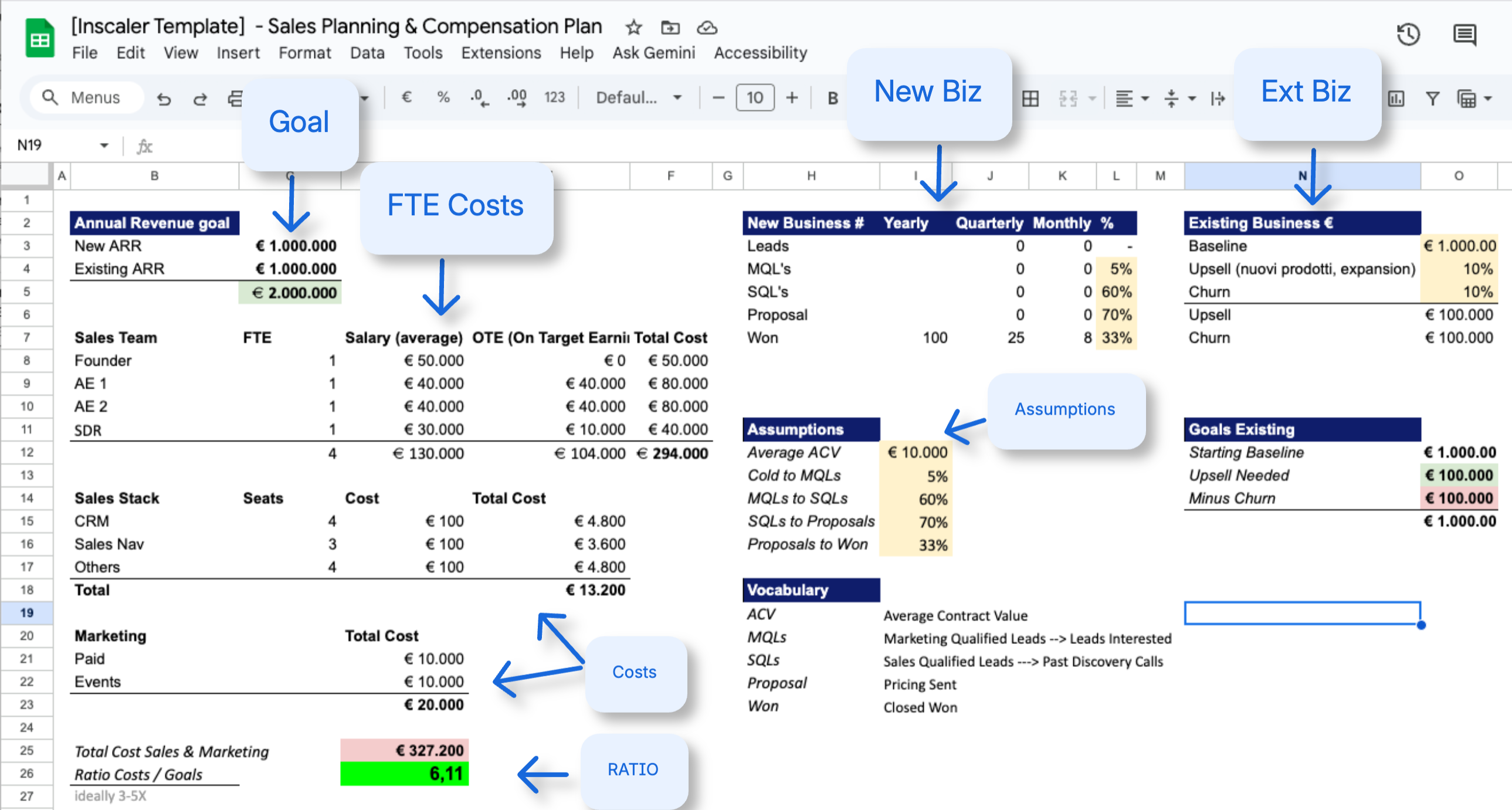Last night I caught up with a founder I worked with last year.
It was late, end of the day, one of those chats that start casual and quickly turn into a working session.
He looked at me and said, "Matte - I'm planning for 2026. Team, expenses, goals. Can I run some numbers by you and see if it makes sense?".
We spent the next 45 minutes sketching ideas.
What I loved most was that he was thinking long-term.
What I reminded him, though, was simple: early-stage sales planning is a different sport.
This is for startups still below the 2–3M ARR mark. Once you grow past that, you need a more complex model and way more data.
When I plan sales targets, I always start bottom-up.
How many people do I have?
What can each realistically deliver?
And how does that roll up to the company's total goal?
Let's say you have three quota-carrying AEs, each with a 500K target. That's 1.5M in total.
But here's the catch: early-stage teams rarely hit 100% across the board.
Assume two out of three perform as expected. That puts you closer to 1M in new business.
So, you keep building up from there.
Your basic parameters should include:
Then come the assumptions.
You need to test if your people can actually carry that goal.
Let's imagine a 1M target with three AEs and an average contract value (ACV) of 3K. That means 333 deals per year, or 111 per AE. Roughly 9–10 wins per month each.
If your win rate is 33%, you need around 30 new demos per AE every month.
If your win rate drops to 20%, the math explodes.
Can each AE manage 40–50 demos a month?
Very hard unless most leads are inbound.
This is where planning gets tricky.
The second piece of the puzzle is your existing business.
How much revenue are you carrying into the new year?
We call this the baseline – the total amount (and number of customers) still active on January 1st.
If your baseline is 500K, you need to estimate two things:
And who will own those numbers – Account Managers, Customer Success, or your AEs?
The existing business is usually easier to plan because you're working with real customers, not guesses.
Now, the ratio that keeps it all grounded: your total cost versus your revenue goal. Aim for a 3–5X ratio.
It can be lower if you're in aggressive expansion mode or higher if you're consolidating with tighter budgets.
But don't forget one thing: your team's actual attainment matters more than your spreadsheet.
If your team hits only 70% of quota, you'll need to either set a higher overall target or work on improving execution.
It has to account for real humans, their ramp-up, and their readiness.
Hiring three reps and expecting them to hit full quota by month six without onboarding, structure, or enablement is wishful thinking.
Getting your team to the goal is a job in itself.
And it's not one a founder can carry alone forever.
So, if you're planning for 2026 and still don't have a Head of Sales or VP Sales, you know where to find me. 👀
Thanks for reading this far, see you all next week, same day, same time.
